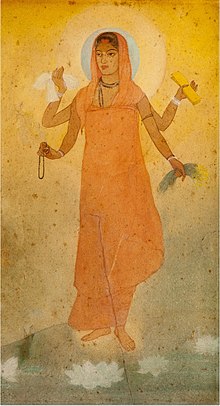
Back বঙ্গীয় শিল্পকলা Bengali/Bangla Escuela de arte de Bengala Spanish École du Bengale French बंगाल स्कूल ऑफ आर्ट MR
This article needs additional citations for verification. (June 2020) |

The Bengal School of Art, commonly referred as Bengal School,[1] was an art movement and a style of Indian painting that originated in Bengal, primarily Calcutta and Shantiniketan, and flourished throughout the Indian subcontinent, during the British Raj in the early 20th century. Also known as 'Indian style of painting' in its early days, it was associated with Indian nationalism (swadeshi) and led by Abanindranath Tagore (1871–1951), and was also being promoted and supported by British arts administrators like E. B. Havell, the principal of the Government College of Art and Craft, Kolkata from 1896; eventually it led to the development of the modern Indian painting.[1][2][3]
- ^ a b Cite error: The named reference
ngmawas invoked but never defined (see the help page). - ^ Mitter, Partha (1994). "How the past was salvaged by Swadeshi artists". Art and nationalism in colonial India, 1850-1922: occidental orientations. Cambridge, UK: Cambridge University Press. pp. 267–306. ISBN 978-0-521-44354-8. Retrieved 8 March 2012.
- ^ Onians, John (2004). Atlas of world art. London: Laurence King Publishing. p. 304. ISBN 978-1-85669-377-6. Retrieved 8 March 2012.